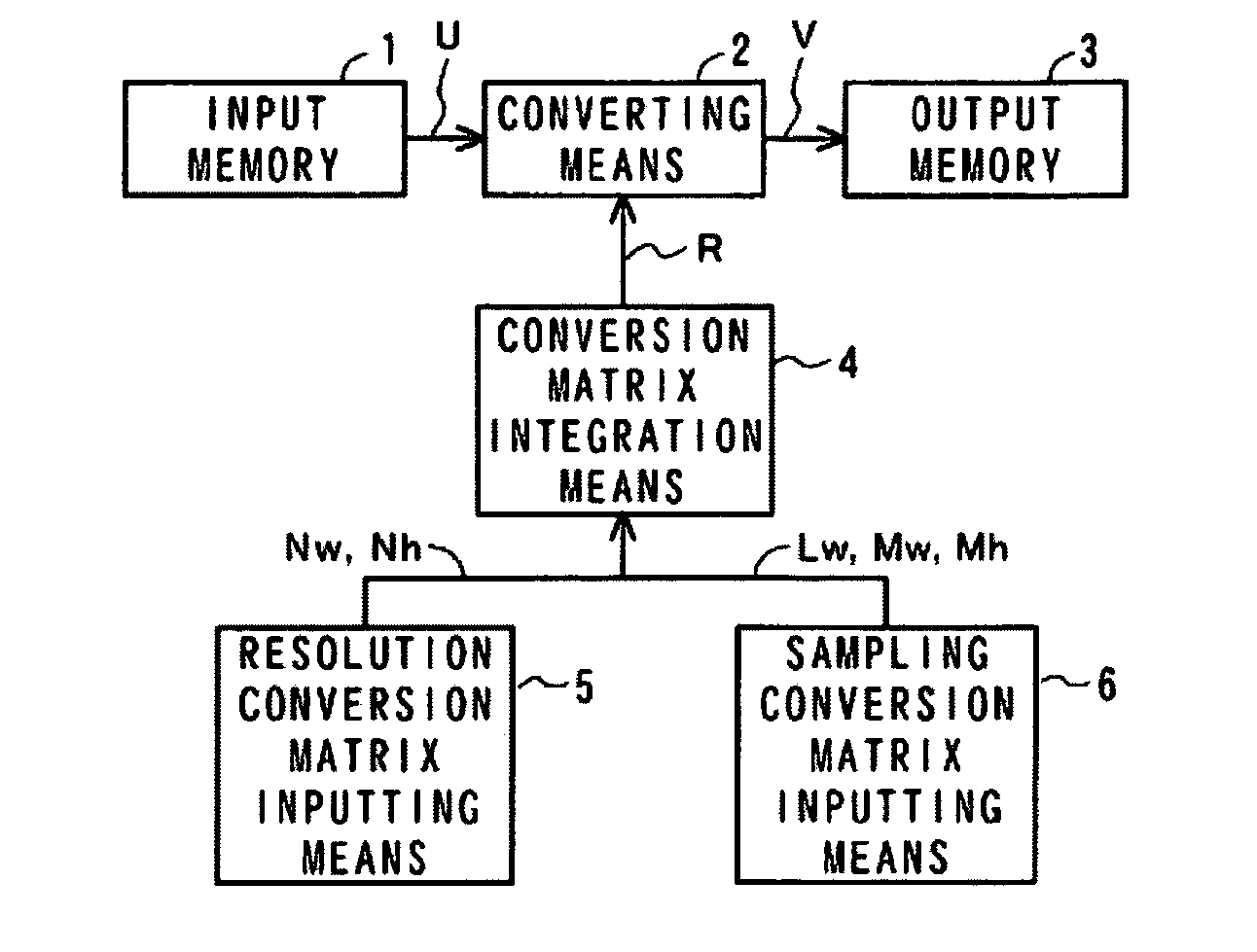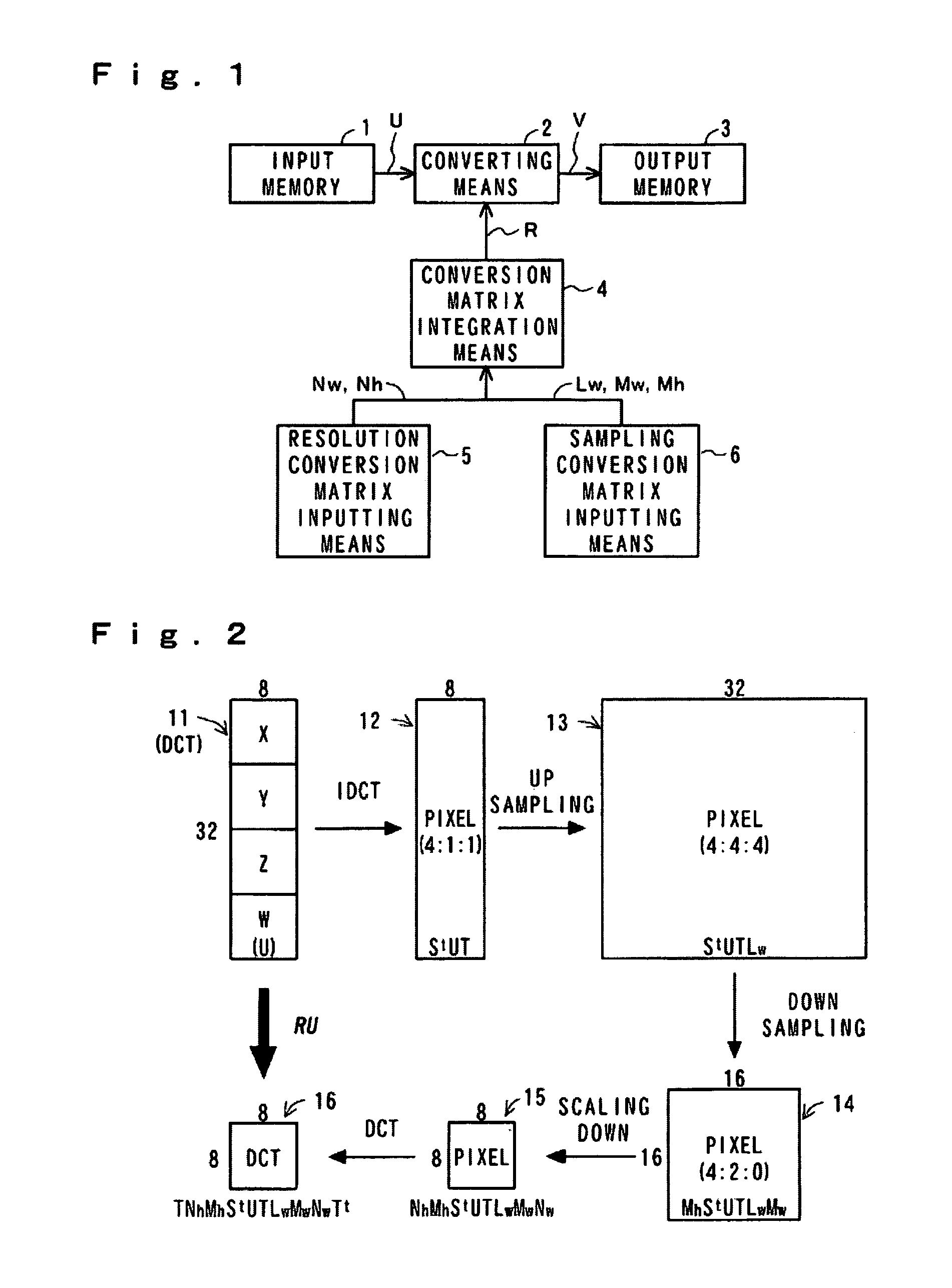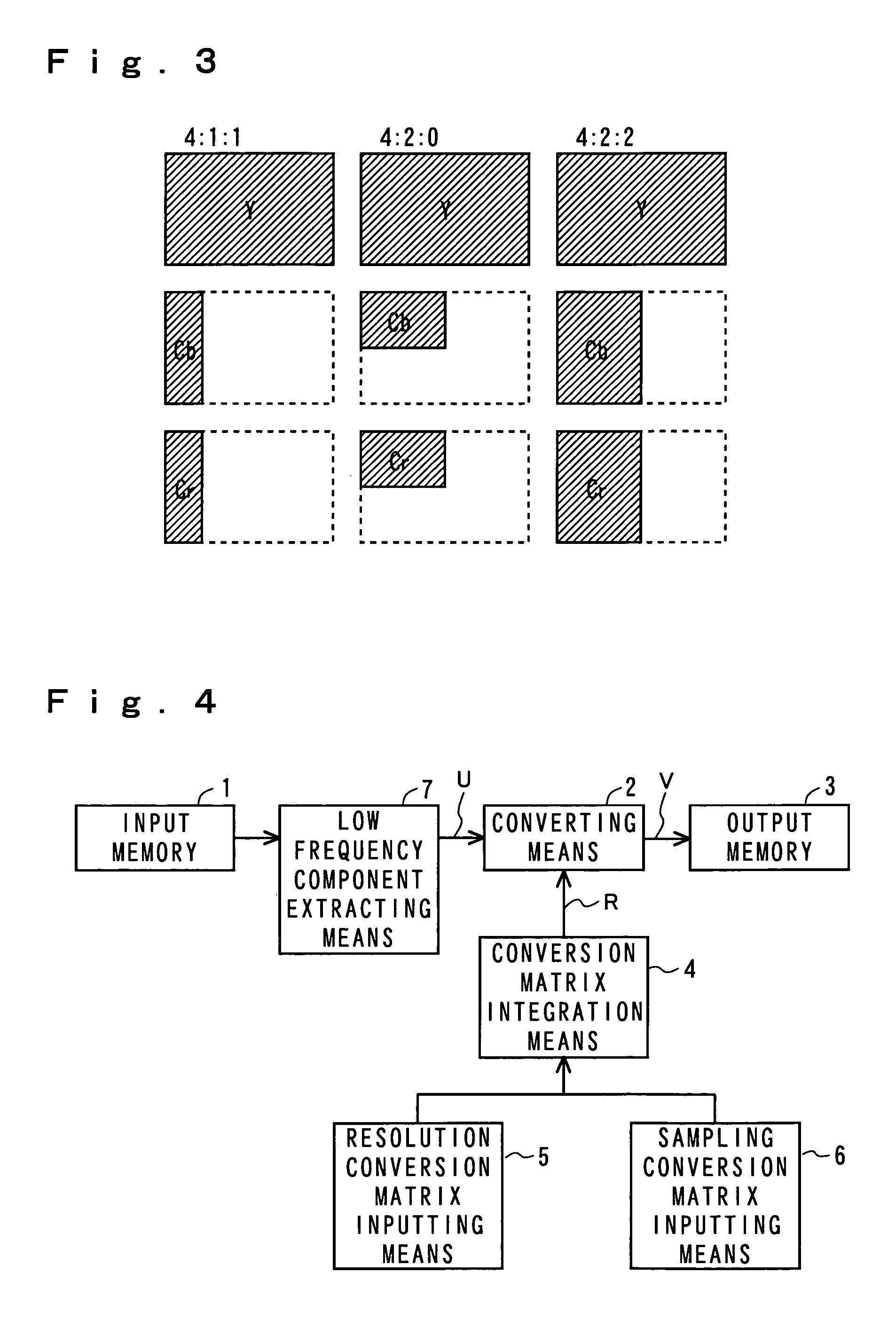Apparatus for converting conversion encoding coefficients using sampling/resolution conversion
a technology of conversion encoding coefficients and apparatus, applied in the field of apparatus for converting conversion encoding coefficients using sampling/resolution conversion, can solve the problems of large computation amount, large processing speed, and large data region, and achieve the effect of rapid conversion and without deteriorating image quality
- Summary
- Abstract
- Description
- Claims
- Application Information
AI Technical Summary
Benefits of technology
Problems solved by technology
Method used
Image
Examples
first embodiment
[0019]The present invention will be explained in detail below with reference to the drawings. FIG. 1 is a block diagram showing an outline structure of the present invention.
[0020]In FIG. 1, conversion coefficient information converted by orthogonal conversion is accumulated in an input memory 1 as an input of an entire system. A conversion encoding coefficient read out from the input memory 1 is input to converting means 2. Conversion matrix integration means 4 obtains the product of a basis matrix in a conversion encoding mode, an interpolation matrix or a thinning matrix input from resolution conversion matrix inputting means 5, and an interpolation matrix or a thinning matrix input from sampling conversion matrix inputting means 6, and then outputs the same to the converting means 2. Alternatively, the conversion matrix integration means 4 selects a conversion matrix which is previously calculated and stored in a memory (not shown), and then outputs it to the converting means 2....
second embodiment
[0043]Next, the present invention will be explained. In this embodiment, the computation amount is further reduced by utilizing the symmetry of the conversion matrix, and the computation speed of the converting means 2 (see FIG. 1) is increased.
[0044]If the equations (1) and (8) are substituted into the equation (12), the following equation (13) can be obtained.
V=AX+BY+HBHZ+HAHW (13)
[0045]Further, if both sides of the equation (13) are multiplied by matrix H from the left and the addition and subtraction are carried out with respect to the equation (13), the resultants will be as shown in the following equations (14) and (15), respectively:
(E+H)V=(E+H)A(X+HW)+(E+H)B(Y+HZ) (14)
(E−H)V=(E−H)A(X−HW)+(E−H)B(Y−HZ) (15)
[0046]Since (E+H) and (E−H) in the equations (14) and (15) have a want of rank, there exists no reversed matrix. Thus, even if the same (E+H) and (E−H) are multiplied in both sides, they can not be canceled.
[0047]If the properties of the (E+H) and (E−H) are taken into acc...
PUM
 Login to View More
Login to View More Abstract
Description
Claims
Application Information
 Login to View More
Login to View More - R&D
- Intellectual Property
- Life Sciences
- Materials
- Tech Scout
- Unparalleled Data Quality
- Higher Quality Content
- 60% Fewer Hallucinations
Browse by: Latest US Patents, China's latest patents, Technical Efficacy Thesaurus, Application Domain, Technology Topic, Popular Technical Reports.
© 2025 PatSnap. All rights reserved.Legal|Privacy policy|Modern Slavery Act Transparency Statement|Sitemap|About US| Contact US: help@patsnap.com



